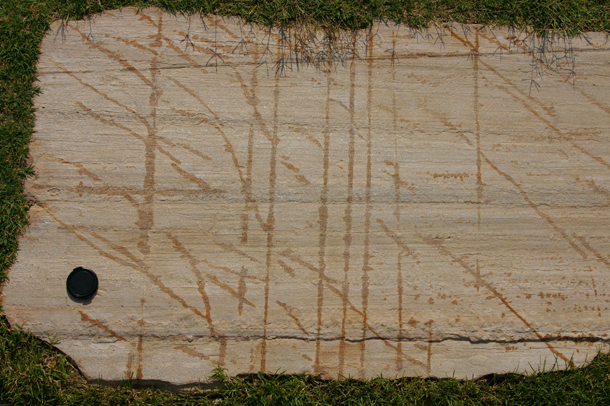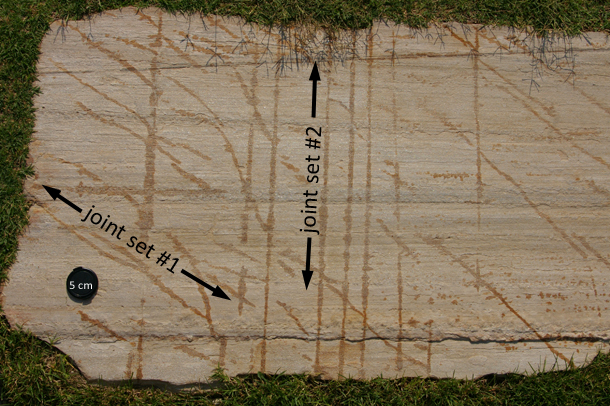A lot on my plate today, so I’m just going to toss a random photo from my summer trip to Turkey up on the blog for today. This is a block of building stone at Hierapolis, the Greek spa resort atop the travertine mounds of Pamukkale, in central Turkey (near the town of Denizli). Check out the sweet joints:

They occur in two main sets, which intersect at angles between 45° and 60°.

The joints are highlighted by staining (mineral deposits) which are localized along the joints because of preferential fluid flow through the open space of the fracture. Notice that the natural layering in this rock also permits some fluid flow, and there are horizontal (relative to this picture) stains about the same width as the joint stains, as well as little layer-parallel “branches” of staining which come off of some of the joints. (Is this layering bedding? What type of rock is this? Sorry — I can’t tell you. This is one I snapped on the fly as I was rushing towards a cold beverage at the visitor’s center.)
What do you think the sequence of jointing was here? Did “#1” actually come first? Cite the evidence in support of your interpretation.
